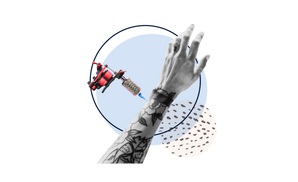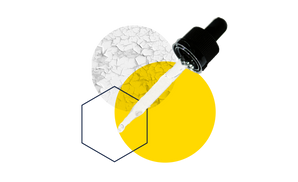Picking Cherries
In my continuous search for improving the bioavailability of our actives, I came across something peculiar. In the skincare industry, it’s not unusual to have pre-selected responders when running clinical trials. Now you may ask, how is that even ethical?
In theory, subjects in a clinical trial should be randomized. Randomization ensures that the sample set is a good representative of the population being studied. Let's say we're studying how effectively a new drug works. In a perfect world, we would pick subjects from various demographics and have the unmarked drug tested against a placebo. Patients would then be tested for the efficacy of the drug, and results would be analyzed quantitatively. This is how it usually goes for standard clinical trials. It can be better, of course, but you see how rigorous it must be.
Now, let's say Regimen Lab has a new serum and would like to do a clinical trial on it. The first thing we do is go to a testing centre specialized in doing dermatologic clinical trials. They would give our unmarked cream to their subjects to test at home. Then after a few days, subjects answer a multiple-choice quiz based on their experience. Because I primed you with how standard scientific clinical trials work, you're probably appalled by how unscientific this one is. There are quite a few problems in this scenario, but I'd like to address the three main ones: Controls, Assessment, and Sampling.
Controls
3rd Grade Science. When running an experiment, you should always have controls. In the last scenario, there wasn't any comparison with a vehicle (in this case, a serum with just water or solvent). We can't definitively attribute the changes they saw to the serum as it could just be a placebo effect. Bill Nye would disapprove.
Assessment
The way you ask subjects is another huge factor as it can mislead them into answering differently. Let's look at the following question:

Well, I exaggerate, but you get my point. The question is leading, and the choices are biased. This is how you get those "clinical trial" results saying:
 Next scenario. I get a bunch of randos and put them in a room together (masked, of course). I give them the serum to test, and they say how the serum feels on their skin. At first, this would seem better than the multiple-choice questionnaire, but "group think" can occur.
Next scenario. I get a bunch of randos and put them in a room together (masked, of course). I give them the serum to test, and they say how the serum feels on their skin. At first, this would seem better than the multiple-choice questionnaire, but "group think" can occur.
Group think is a phenomenon when a desire for consensus overrides the desire to state an alternative or unpopular opinion. Say Subject A was the first to voice their opinion, saying it was an excellent serum for hydration. Subject B agrees and double downs on it and shouts it is the best serum ever. Subject C wants to show off and screams she'll literally die without it. Subject D was on the fence, but since she'll more likely conform to the consensus rather than express her contradicting opinion. As you see, the results here won't be that reliable either.
Sampling
I went incognito and talked to two testing centers for dermatologic products. I said I have a product that I want to have clinical trial results for. Here's how it went down:
Testing Centre A
Me: The serum's main active is amethyst extract from a secret cave in Indonesia. Here's the INCI: Water, Glycerin, Quartz, Lactobacillus Ferment & Lactobacillus & Cocos Nucifera (Coconut) Fruit Extract.
Them: Cool, cool. What properties do you want to focus on? Check them here.
Me: Anti-aging, Brightening, Radiance etc.
Them: Yes, we can definitely do that. When do you want it done?
Me: ASAP, but I'm still hesitant. Do you have sort of a guarantee or a refund process if I don't want the results?
Them: Oh, don't worry, we rarely have bad results.
Me: How rare?
Them: Usually 5% or less. We can set up the experiment to figure which process would yield the best results for you, don't worry.
Me: Awesome. I'll get in touch.
Testing Centre B
Me: Sup. The serum's main active is amethyst extract from a secret cave in Indonesia. Here's the INCI: Water, Glycerin, Quartz, Lactobacillus Ferment & Lactobacillus & Cocos Nucifera (Coconut) Fruit Extract.
Them: Oh okay, we would suggest adding more actives to it. But if you insist, we can def figure something out.
Me: How do you mean?
Them: We can find the proper method to test it to get the best results.
Me: What if I don't like the results that I get? Can I get a refund?
Them: We don't offer refunds, but we'll work it out with you, don't worry. Only 5-10% of studies don't yield good results with us.
Me: Cool cool. I'll get in touch.
First. What the absolute duck. The second testing seems better, but oh my word! How can they get consistently good results, you may ask? Well, it all boils down to sampling. Although most of these companies are not nefarious enough to cherry-pick subjects, the process eventually leads to a cherry-picked group that always yields excellent results for tested products. Buu...bbuut how?
Imagine this
So you and your two other besties need extra dough for the new iPhone 13. You saw an ad recruiting subjects for cosmetic testing. You signed up, and the three of you successfully entered. A few weeks later, a study was about to start, and all three of you participated.

You tested the cream and loved it and had good results; you gave it a glowing review. Bestie A didn't quite like it as it did nothing for her but she still had to finish the whole trial, which was cumbersome. Bestie B reacted badly to it and damaged her skin barrier. After the study, you all got an email saying another study was about to start. You asked Bestie A and she said she'd think about it. Bestie B says absolutely not, as she had a previous reaction. You then proceed alone (as always) in the subsequent study.
As time goes by, the company's respondent set becomes a concentrated group of people who are more likely to react positively in clinical trials. In fact, subjects are normally grouped into low, medium and high responders. The more high responders you have, the more likely you'll get good results. So when skincare companies approach some of these centers, they're super confident that the results would be glowing. This isn't a hidden secret; the practice is so blatant that if you google "How to improve the bioavailability and efficacy of skincare actives," one of the results shows an article that proposes the solution of decreasing low responders and increasing high responders. I had to re-read the paragraph several times; I thought I was having a stroke.
So it's probably safe to say that we won't be having any of those "clinical trial" results for our products anytime soon.
Cheers,
Webster


